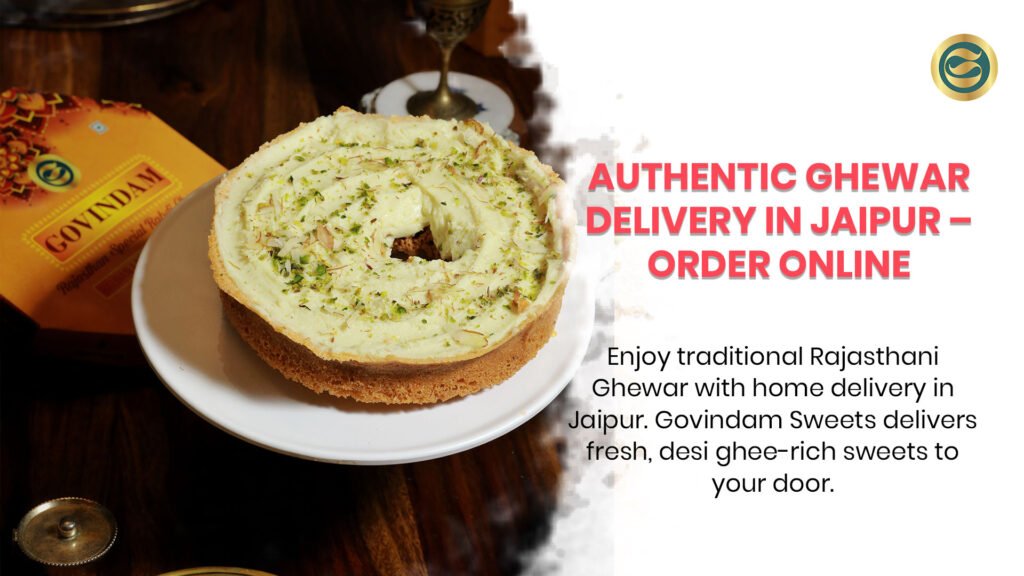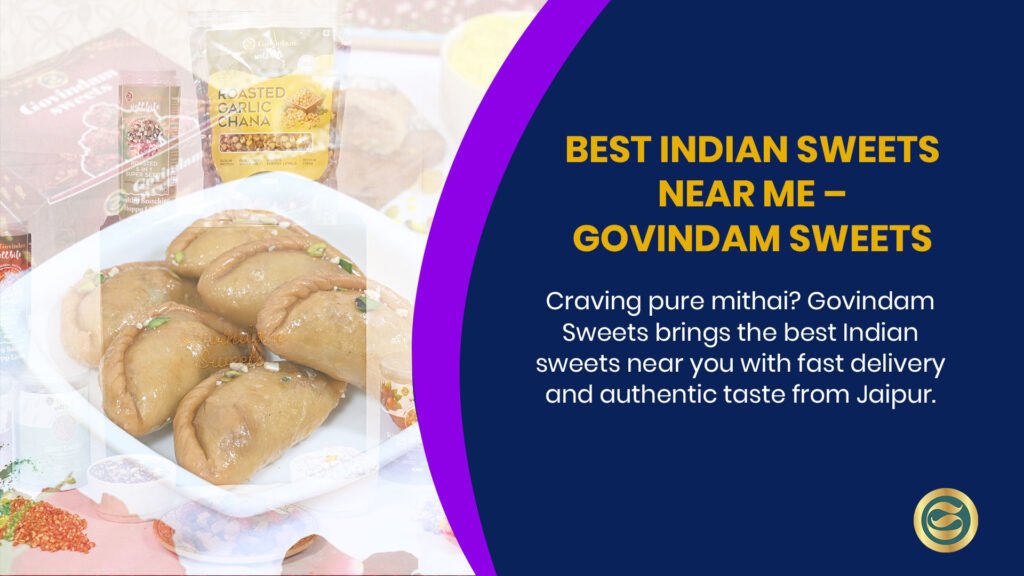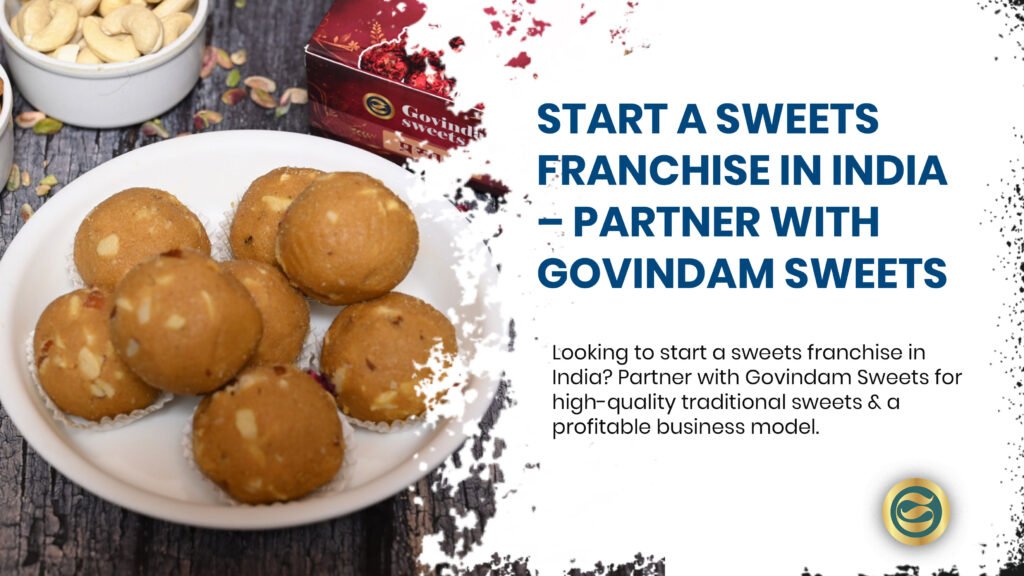Traditional British Desserts & Sweets: A Taste of Sweet Heritage

Explore Britain’s rich dessert heritage from sticky toffee pudding to Victoria sponge. This comprehensive guide covers famous traditional British puddings, regional specialties from Scotland, Wales, and England, and where to find authentic versions throughout the UK, plus tips for recreating these classic sweet treats at home.
Introduction to Britain’s Sweet Heritage
British cuisine may often be overlooked in global culinary conversations, but when it comes to traditional British desserts, the United Kingdom boasts a rich and diverse sweet heritage that has influenced confectionery worldwide. From the comforting warmth of sticky toffee pudding to the delicate layers of a Victoria sponge, British sweet treats reflect the nation’s history, regional diversity, and changing tastes across centuries.
These classic puddings and heritage desserts remain beloved staples in British homes, restaurants, and bakeries. Many recipes have been passed down through generations, evolving slightly with modern tastes but maintaining their essential character. While distinctly different from international sweets like Ghewar or Bengali sweets, traditional British desserts share a similar cultural significance in their respective regions. The persistence of these desserts in contemporary food culture speaks to their timeless appeal and the emotional connections they foster.
In this comprehensive guide, we’ll explore the most famous British puddings and sweets, their historical origins, regional variations, and where to find authentic versions throughout the UK. Whether you’re planning a culinary tour of Britain or simply looking to recreate these classics at home, this guide offers a sweet journey through one of Britain’s most cherished culinary traditions.
The Essential Traditional British Desserts Everyone Should Try
Sticky Toffee Pudding: The Nation’s Comfort Sweet
Often voted as Britain’s favorite dessert, sticky toffee pudding represents the pinnacle of comfort among traditional British desserts. This rich, moist date sponge cake smothered in toffee sauce creates a perfect balance of sweetness and texture that has made it a national treasure. While some might compare its beloved status to specialty treats like Balwan Laddu in Indian cuisine, sticky toffee pudding holds a unique place in British culinary identity.
Origins: Despite its firmly established place in British culinary tradition, sticky toffee pudding is relatively modern, believed to have been created in the 1970s at the Sharrow Bay Country House Hotel in the Lake District. Some historians argue for earlier versions from Scotland, but its widespread popularity emerged in the late 20th century.
Regional Variations: The Lake District version remains the most famous, though Scotland’s Aberdeenshire has its own celebrated recipe. Some variations include:
- Vanilla custard instead of toffee sauce in parts of Yorkshire
- Addition of black treacle in Scottish versions
- Inclusion of walnuts in some Cumbrian recipes
Where to Try It: For the most authentic experience, visit the Cartmel Village Shop in Cumbria, whose version is widely considered among the best traditional British desserts available commercially. In London, Rules Restaurant (London’s oldest restaurant) serves an exceptional sticky toffee pudding that honors the classic recipe.
Victoria Sponge: Royal Heritage in Cake Form
Named after Queen Victoria, this simple yet elegant cake epitomizes British heritage desserts. Two light sponge cakes sandwiched together with a layer of jam and buttercream create a dessert that remains a staple at afternoon teas across the nation.
Origins: Queen Victoria’s fondness for this simple cake during her afternoon tea rituals popularized it in the 1800s. The original recipe was likely created by her lady-in-waiting, Anna, the Duchess of Bedford, who is credited with establishing the tradition of afternoon tea.
Traditional Preparation: A classic Victoria sponge should be:
- Made with equal weights of flour, sugar, butter, and eggs (the “weight of eggs” method)
- Filled with raspberry jam, though strawberry is also acceptable
- Dusted with caster sugar, not iced
- According to purists, buttercream is a modern addition – traditionally, only jam was used
Where to Try It: Bettys Tea Rooms in Yorkshire serve an exemplary Victoria sponge that adheres to traditional methods. In London, Fortnum & Mason’s elegant version remains faithful to its heritage while adding subtle modern refinements.
Spotted Dick: Whimsically Named Classic
Despite its amusing name that often raises eyebrows, spotted dick remains one of the most cherished traditional British desserts. This steamed suet pudding studded with dried fruit (the “spots”) and typically served with custard exemplifies British comfort food.
Origins: Dating back to the mid-19th century, the first recorded recipe appears in Alexis Soyer’s 1849 cookbook “The Modern Housewife or Ménagère.” The name comes from “dick” (a colloquial term for pudding) and “spotted” (referring to the currants or raisins).
Traditional Preparation: Authentic spotted dick features:
- Suet pastry dough (animal fat mixed with flour)
- Currants or raisins evenly distributed throughout
- Steaming rather than baking
- Generous accompaniment of vanilla custard
Where to Try It: The restaurant at St. John in London serves one of the most acclaimed traditional versions. For a historic experience, Rules Restaurant in Covent Garden has featured spotted dick on their menu for over a century.
Treacle Tart: A Sweet Slice of Nostalgia
With its distinctive rich, sweet flavor, treacle tart has maintained its position among the most beloved traditional British desserts for generations. Harry Potter fans might recognize it as the character’s favorite dessert at Hogwarts, adding to its cultural significance.
Origins: Golden syrup, the tart’s main ingredient, was first created in the 1880s by Abram Lyle (of Tate & Lyle). Treacle tart recipes began appearing shortly afterward, making it a relatively modern addition to British heritage desserts.
Key Features:
- Short, crisp pastry base
- Filling of golden syrup, breadcrumbs, and lemon
- Often served with clotted cream or custard
- Sometimes enhanced with a hint of ginger
Where to Try It: The Ivy in London serves a definitive version that balances sweetness with citrus notes. In Cornwall, the Stargazey Inn offers a traditional treacle tart made with local ingredients that exemplifies the best of classic British sweet treats.
Bread and Butter Pudding: Thrifty Elegance
Representing the British talent for transforming humble ingredients into something special, bread and butter pudding takes stale bread, butter, and custard and creates a comforting dessert that has graced British tables for centuries. Just as Mawa Kachori elevates simple ingredients into something extraordinary, bread and butter pudding demonstrates how culinary ingenuity can transform basic components into beloved treats.
Origins: Dating back to the early 18th century, bread and butter pudding was originally a way to use leftover bread, making it a thrifty choice during harder times. It appears in recipes as early as 1728.
Evolution: Over time, this simple pudding has evolved:
- Original versions used plain bread and basic custard
- Victorian adaptations added dried fruits and spices
- Modern interpretations might use brioche, panettone, or croissants
- Additions like marmalade, chocolate, or liqueurs are contemporary twists
Where to Try It: The traditional version at Simpson’s in the Strand (London) remains faithful to heritage recipes. For a modern interpretation that respects tradition, The Goring Hotel’s dining room offers a refined version with subtle contemporary touches.
Eton Mess: Aristocratic Simplicity
Named after the prestigious Eton College, this combination of strawberries, broken meringue, and whipped cream creates a contrast of textures that has made it one of the most popular traditional British desserts, especially during summer.
Origins: Traditionally associated with Eton College’s annual cricket match against Harrow School, legend suggests it was created when a meringue dessert was accidentally crushed but served anyway. While this story is likely apocryphal, the dessert has been served at Eton since at least the 1930s.
Seasonal Significance: Eton mess is strongly associated with British summer and the strawberry season, particularly around Wimbledon tennis tournament time.
Where to Try It: The Savoy Grill in London serves a classic version during summer months. For a uniquely authentic experience, the Tilley’s tea shop near Eton College itself offers a version claimed to be close to the original school recipe.
Regional Traditional British Desserts
Scottish Heritage Desserts
Scotland’s distinct culinary tradition has contributed significantly to the canon of traditional British desserts, with several uniquely Scottish creations becoming beloved throughout the UK.
Cranachan: The Taste of the Highlands
This distinctively Scottish dessert combines whipped cream, honey, fresh raspberries, toasted oatmeal, and a splash of whisky to create a layered dessert that showcases Scotland’s natural bounty. Similar to how Chogani Laddu showcases regional specialties in its preparation, cranachan represents the distinct taste preferences and available ingredients of its Highland origins.
Traditional Preparation: Authentic cranachan should:
- Use steel-cut oats, lightly toasted
- Incorporate heather honey for floral notes
- Feature Scottish raspberries when in season
- Include a generous measure of single malt whisky
Where to Try It: The Ubiquitous Chip in Glasgow serves an authentic version that respects traditional methods. In Edinburgh, The Witchery by the Castle offers a refined cranachan that maintains its rustic charm.
Clootie Dumpling: Scotland’s Festive Pudding
This dense, spiced pudding gets its name from the “cloot” (cloth) in which it’s traditionally boiled. Similar to Christmas pudding but with distinct Scottish characteristics, it remains a cherished heritage dessert.
Key Features:
- Mixture of flour, breadcrumbs, suet, dried fruits, and spices
- Boiled in a floured cloth that creates a distinctive skin
- Often served with custard or cream
- Traditionally enjoyed on Burns Night and other celebrations
Where to Try It: Mimi’s Bakehouse in Edinburgh serves a traditional version during winter months. For year-round availability, the Edinburgh Larder offers mini clootie dumplings that preserve the authentic flavor in a more approachable size.
Welsh Sweet Traditions
Wales has contributed several distinctive items to the pantheon of traditional British desserts, with recipes that often reflect the country’s agricultural heritage.
Welsh Cakes: Griddle-Baked Perfection
Neither quite a cake nor a biscuit, these flat spiced discs cooked on a bakestone or griddle have been a Welsh teatime favorite for generations. Their cooking method bears some resemblance to savory griddle-cooked items like Pyaz Kachori, though with entirely different flavor profiles and ingredients.
Origins: Dating back to the late 19th century, Welsh cakes were traditionally made by miners’ wives as portable, energy-giving treats.
Traditional Preparation:
- Mixture of flour, butter, sugar, egg, and currants
- Spiced with nutmeg or cinnamon
- Cooked on a flat iron griddle until golden
- Dusted with sugar while still warm
Where to Try Them: Fabulous Welshcakes in Cardiff Bay specializes in authentic versions with both traditional and contemporary flavors. The Castle Welsh Crafts shop in Cardiff Castle makes them fresh throughout the day using traditional methods.
Bara Brith: “Speckled Bread” of Wales
This dense tea loaf studded with dried fruits soaked in tea has been a Welsh teatime staple for centuries. The name literally means “speckled bread” in Welsh, referring to the fruit distributed throughout the loaf.
Key Features:
- Dried fruits (typically raisins, currants, and sultanas) soaked overnight in tea
- Spiced dough often featuring mixed spice or cinnamon
- Sometimes enhanced with marmalade or honey
- Traditionally served sliced and buttered
Where to Try It: Pont Ar Daf Tea Rooms in the Brecon Beacons serve a traditional version using a recipe passed down through generations. In North Wales, Tu Hwnt i’r Bont (Beyond the Bridge) tea room near Llanrwst offers a celebrated bara brith that attracts visitors from throughout Britain.
English Regional Specialties
Beyond the nationally recognized favorites, England’s diverse regions have developed distinctive traditional British desserts that reflect local ingredients and cultural influences.
Bakewell Pudding and Tart: The Peak District’s Gift
Often confused with each other, these two distinct desserts both hail from the town of Bakewell in Derbyshire and feature almond flavors, but differ significantly in execution.
Bakewell Pudding:
- The original version, dating to the 1860s
- Features a puff pastry base
- Filled with jam and an egg/almond meal custard
- Has a soft, almost liquid center when fresh
Bakewell Tart:
- Later adaptation with shortcrust pastry
- Topped with fondant icing and a cherry
- More stable texture and longer shelf life
- Now more widely known nationally
Where to Try Them: The Old Original Bakewell Pudding Shop in Bakewell itself claims to use the original recipe. For comparison, Bloomers of Bakewell offers both pudding and tart versions made to traditional specifications.
Lardy Cake: West Country Indulgence
This rich, sweet bread from Southwest England incorporates lard, dried fruits, and sugar to create a uniquely textured baked good that sits somewhere between bread and cake.
Origins: Developed in counties including Wiltshire, Gloucestershire, and Berkshire, lardy cake was traditionally made on bread-baking days using leftover dough enriched with lard and sugar.
Traditional Preparation:
- Yeast dough laminated with lard, similar to pastry technique
- Layered with dried fruits (currants, raisins) and sugar
- Baked until the sugar caramelizes at the bottom
- Cut into squares rather than slices
Where to Try It: Huffkins Bakery in the Cotswolds makes an authentic version following traditional methods. In Devizes, Wiltshire, Reeve the Baker produces lardy cakes that maintain the authentic regional character of this heritage treat.
Trifle and Its Many Variations
Few desserts epitomize traditional British confectionery like trifle, with its distinctive layered appearance and flexible composition. This adaptable dessert has evolved countless regional and family variations while maintaining its essential character.
Classic Trifle Components
A traditional trifle typically includes:
- Layers of sponge cake (often soaked in sherry or fruit juice)
- Real custard (not instant pudding)
- Fresh or preserved fruit (commonly raspberries, strawberries, or peaches)
- Whipped cream topping
- Decorative elements like toasted almonds, hundreds-and-thousands, or crystallized fruits
Regional Trifle Variations
Different parts of Britain have developed distinctive trifle styles:
Scottish Tipsy Laird:
- Uses whisky instead of sherry
- Often incorporates raspberries
- Sometimes includes a layer of toasted oats
Devonshire Trifle:
- Features clotted cream instead of whipped cream
- Uses local strawberries when in season
- Often includes a layer of strawberry jam
Lancashire Rum Nicky Trifle:
- Incorporates rum as the spirit of choice
- Uses dried dates as the fruit component
- Often includes ginger cake rather than plain sponge
Where to Try It: Fortnum & Mason’s restaurant in London serves a classic version that adheres to traditional methods. For seasonal variations, The Wolseley offers trifles that change throughout the year while maintaining traditional techniques.
Christmas Pudding: The Ultimate Festive Tradition
No discussion of traditional British desserts would be complete without Christmas pudding, the rich, dense, fruit-laden dessert that culminates the British Christmas dinner. Steeped in tradition and symbolism, this heritage dessert remains central to British festive celebrations.
Origins and Evolution
Christmas pudding evolved from medieval “frumenty,” a spiced porridge-like dish containing meat. By the Victorian era, it had transformed into something closer to today’s version, becoming firmly established as a Christmas tradition when featured in Charles Dickens’ “A Christmas Carol.”
Traditional Preparation
Authentic Christmas pudding involves:
- Mixture of dried fruits, suet, breadcrumbs, flour, eggs, and spices
- Addition of alcohol (typically brandy or rum)
- Aging for at least one month before Christmas
- Steaming for several hours before serving
- Flaming with additional brandy at the table
- Traditionally containing silver coins or tokens for luck
Modern Adaptations
While respecting tradition, contemporary Christmas puddings often feature:
- Alcohol-free versions for family enjoyment
- Lighter versions with less suet and more fresh fruit
- Gluten-free adaptations using alternative flours
- Individual puddings instead of large family-sized versions
Where to Try It: For a heritage experience, Wilkin & Sons (Tiptree) produces Christmas puddings using a recipe dating back to 1885. In London, Harrods Food Hall sells an exemplary traditional version available year-round for those unwilling to wait for December.
Teatime Favorites and Sweet Biscuits
The British tradition of afternoon tea has generated numerous traditional British desserts specifically designed to accompany this daily ritual. From dainty cakes to hearty scones, these teatime treats form an essential part of British sweet heritage.
Scones: The Foundation of Cream Tea
These slightly sweet baked goods are the cornerstone of the classic cream tea, providing the perfect base for clotted cream and jam. While distinctly British, scones showcase how different cultures develop their own unique baked goods for social occasions, much like how Samosa became integral to social gatherings in South Asian contexts.
The Devon vs. Cornwall Debate:
- Devon tradition: Split the scone, add cream first, then jam
- Cornish tradition: Split the scone, add jam first, then cream
- This regional difference sparks passionate debate throughout Britain
Traditional Preparation:
- Simple ingredients: flour, butter, milk, and minimal sugar
- Risen with baking powder rather than yeast
- Minimal handling to ensure tenderness
- Round shape cut from dough rather than rolled into balls
Where to Try Them: The Ritz London offers exemplary traditional plain scones during their famous afternoon tea service. For a regional experience, Trevaskis Farm in Cornwall serves authentic Cornish-style cream teas with freshly baked scones.
Eccles Cakes: Currant-Filled Delights
These flaky pastry cakes filled with currants originate from the town of Eccles in Greater Manchester and have been enjoyed across Britain for over 200 years.
Key Features:
- Flaky butter pastry encasing a filling of currants, butter, and sugar
- Distinctive oval shape with three slashes on top
- Sugar-dusted exterior that caramelizes during baking
- Often served with Lancashire cheese as a savory-sweet combination
Where to Try Them: The Real Lancashire Eccles Cakes company in Ardwick produces them to a traditional recipe. In London, St. John Bakery makes a definitive version that respects heritage while ensuring perfect execution.
Shortbread: Scotland’s Buttery Gift
This simple buttery biscuit has become one of the most recognized traditional British confectionery items worldwide, with its origins in Scottish royal kitchens.
Origins: Dating back to the 12th century, shortbread evolved from medieval biscuit bread. Mary, Queen of Scots, was said to be particularly fond of the “petticoat tails” shape of shortbread.
Traditional Shapes:
- Petticoat tails: Large round divided into segments
- Fingers: Rectangular bars, the most common commercial form
- Individual rounds, often decorated with fork pricks
- Ornate shapes pressed in wooden molds for special occasions
Where to Try It: Shortbread House of Edinburgh produces award-winning traditional versions. For historic significance, the Scottish Cafe & Restaurant at the Scottish National Gallery offers shortbread made to a recipe inspired by the royal courts of Scotland.
Where to Find the Best Traditional British Desserts
Historic Tea Rooms and Cafés
Britain’s historic tea rooms offer authentic settings to experience traditional British desserts as they’ve been served for generations.
Bettys Tea Rooms (Yorkshire):
- Founded in 1919 and maintaining traditional baking methods
- Famous for Yorkshire Fat Rascals (a type of scone) and exceptional fondant fancies
- Six locations throughout Yorkshire offering consistent quality
The Willow Tea Rooms (Glasgow):
- Designed by Charles Rennie Mackintosh in 1903
- Serves traditional Scottish desserts including cranachan and scones
- Historic setting enhances the authentic experience
Sally Lunn’s Historic Eating House (Bath):
- One of the oldest houses in Bath, dating to 1482
- Home of the famous Sally Lunn Bun, a large brioche-type cake
- Serves traditional British desserts in a genuine historic setting
Heritage Bakeries Preserving Traditional Methods
Artisanal bakeries throughout the UK maintain traditional baking techniques, offering some of the best examples of British heritage desserts.
Fitzbillies (Cambridge):
- Established in 1920 and famous for their sticky Chelsea buns
- Maintains traditional recipes while ensuring contemporary quality standards
- Ships their most famous treats nationwide
Loch Ness Bakery (Scottish Highlands):
- Specializes in traditional Scottish baking including clootie dumpling and cranachan
- Uses locally sourced ingredients following heritage recipes
- Small-batch production ensuring quality and authenticity
Pumphrey’s Brewing Co. & Coffee Shop (Newcastle):
- Operating since 1750, making it one of Britain’s oldest coffee houses
- Serves traditional Northumbrian desserts including singin’ hinnies (griddle cakes)
- Maintains regional recipes that might otherwise be lost to history
Fine Dining Establishments Elevating Traditional Sweets
High-end restaurants throughout Britain have embraced heritage desserts, often refining them while respecting their traditional character.
Rules (London):
- London’s oldest restaurant (established 1798)
- Serves impeccable versions of sticky toffee pudding and spotted dick
- Historical setting enhances the heritage dining experience
The Three Chimneys (Isle of Skye):
- Showcases Scottish heritage desserts using hyperlocal ingredients
- Their hot marmalade pudding with Drambuie custard exemplifies tradition with refinement
- Seasonal approach ensures authentic connections to Scottish food heritage
The Walnut Tree (Abergavenny, Wales):
- Chef Shaun Hill’s menu includes definitive versions of traditional Welsh desserts
- Their bara brith bread and butter pudding combines two heritage desserts
- Emphasis on quality ingredients and perfect execution
Making Traditional British Desserts at Home
Essential Techniques for Authentic Results
Creating heritage desserts requires understanding traditional British baking techniques that differ from other culinary traditions.
Steam Pudding Mastery:
- Using a proper pudding basin with pleated parchment cover
- Maintaining consistent gentle steam throughout cooking
- Testing for doneness while maintaining steam environment
- Proper turning out techniques to preserve pudding structure
Custard Fundamentals:
- Creating silky egg custard without curdling
- Achieving proper coating consistency for trifles
- Infusing flavors properly into milk/cream base
- Understanding the difference between pouring, setting, and pastry custards
Fruitcake and Rich Cake Methods:
- Proper fruit preparation and alcohol soaking
- Low, slow baking techniques for even cooking without burning
- Feeding techniques for developing flavor over time
- Effective storage for aging rich fruit cakes
Adapting Heritage Recipes for Modern Kitchens
Traditional recipes can be successfully adapted to contemporary equipment and dietary preferences:
Equipment Substitutions:
- Using slow cookers instead of traditional steamers for Christmas pudding
- Silicone molds replacing traditional pudding cloths
- Electric mixers instead of hand beating for faster preparation
- Thermometers ensuring proper sugar temperatures for traditional candies
Dietary Adaptations:
- Plant-based suet alternatives for vegetarian puddings
- Gluten-free flour blends that maintain traditional textures
- Reduced sugar versions that preserve essential character
- Alcohol-free alternatives using fruit juices or essences
Portion Adaptations:
- Individual puddings instead of large family-sized versions
- Freezing techniques for heritage desserts to extend shelf life
- Scaling recipes for smaller households while maintaining proportions
Conclusion: The Enduring Appeal of British Sweet Heritage
Traditional British desserts remain relevant in contemporary culinary culture, both as connections to shared heritage and as genuinely delicious creations worthy of continued appreciation. These puddings, cakes, and sweet treats connect generations through shared experiences, whether enjoyed in historic tea rooms, Michelin-starred restaurants, or family kitchens.
What makes these heritage desserts particularly special is their adaptability. While the essential character of a sticky toffee pudding or Victoria sponge remains consistent, each generation adds subtle refinements and adaptations that keep these classics relevant. The balance between innovation and tradition ensures these beloved recipes continue to delight new audiences while honoring their historical significance.
Whether you’re sampling these traditional British desserts on a culinary tour of the UK or recreating them in your own kitchen, you’re participating in a sweet tradition that spans centuries and continues to evolve. From comforting puddings to elegant teatime treats, Britain’s dessert heritage offers a rich tapestry of flavors, textures, and experiences that truly deserve their place in the global culinary pantheon alongside other cultural sweet traditions like those offered by Govindam.
Frequently Asked Questions About Traditional British Desserts
Q: What is the difference between a pudding and a dessert in British terminology? A: In British culinary language, “pudding” can refer both to specific dessert types (like sticky toffee pudding) and is also used as a general term for the sweet course at the end of a meal. Historically, puddings were often steamed or boiled, but the term has broadened to include many types of sweet dishes.
Q: Are traditional British desserts typically very sweet? A: While certainly sweet, many traditional British desserts balance sweetness with other elements – the tartness of fruit in a crumble, the bitterness of treacle, or the richness of cream. This balanced approach differs from some other dessert traditions that may emphasize pure sweetness more prominently.
Q: Which traditional British desserts are commonly served at Christmas? A: Christmas pudding is the most iconic festive dessert, traditionally served flaming with brandy. Other holiday favorites include mince pies, trifle, Christmas cake (a rich fruit cake covered with marzipan and royal icing), and Yule log (chocolate roulade decorated to resemble a log).
Q: How has immigration influenced traditional British desserts? A: While this article focuses on heritage desserts with deep British roots, it’s worth noting that immigration has enriched British sweet traditions. Desserts like bread and butter pudding show French influences, while more recent additions to the British dessert canon include Gulab Jamun from South Asian traditions and Portuguese-influenced custard tarts.
Q: What’s the best way to experience a range of traditional British desserts when visiting the UK? A: Afternoon tea services at hotels and tea rooms typically offer a selection of miniature traditional desserts. Food festivals, particularly those focusing on regional cuisine, are excellent places to sample local specialties. Many heritage properties operated by the National Trust or English Heritage feature cafés serving classic British desserts made with traditional recipes.
Q: Are there seasonal considerations for traditional British desserts? A: Yes, many British desserts follow seasonal patterns. Summer brings strawberry-focused treats like Eton Mess and summer pudding. Autumn features apple and blackberry crumbles and pies. Winter is the season for rich, warming puddings and festive specialties, while spring introduces lighter desserts featuring early fruits like rhubarb.












